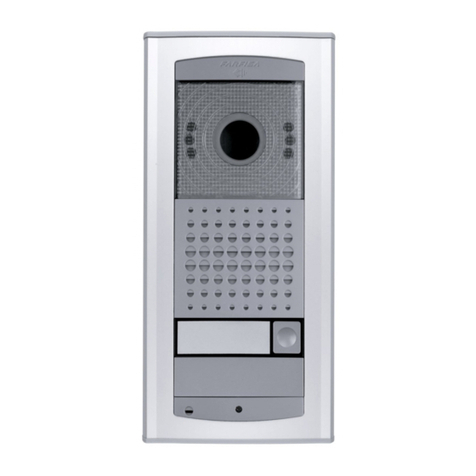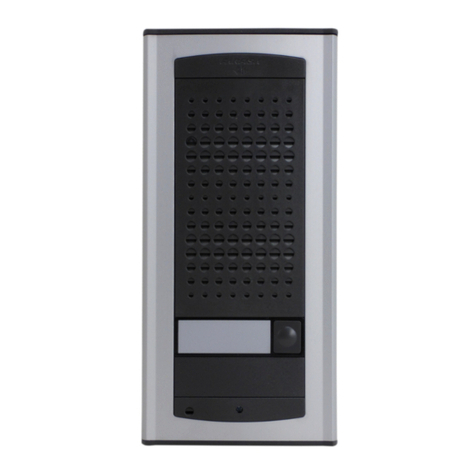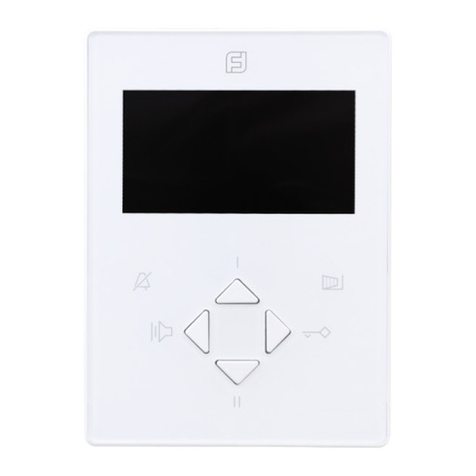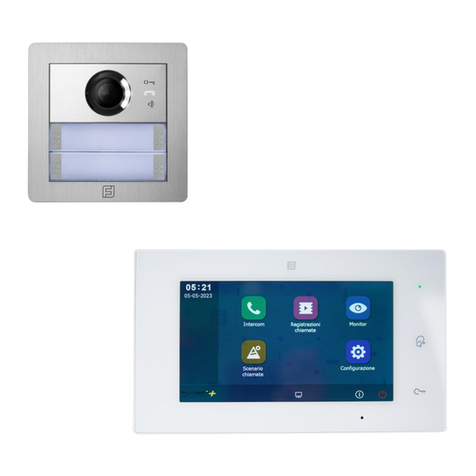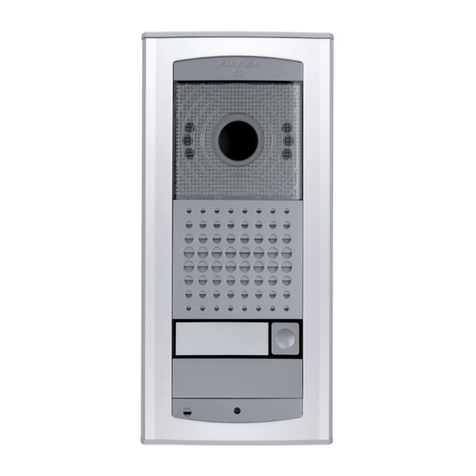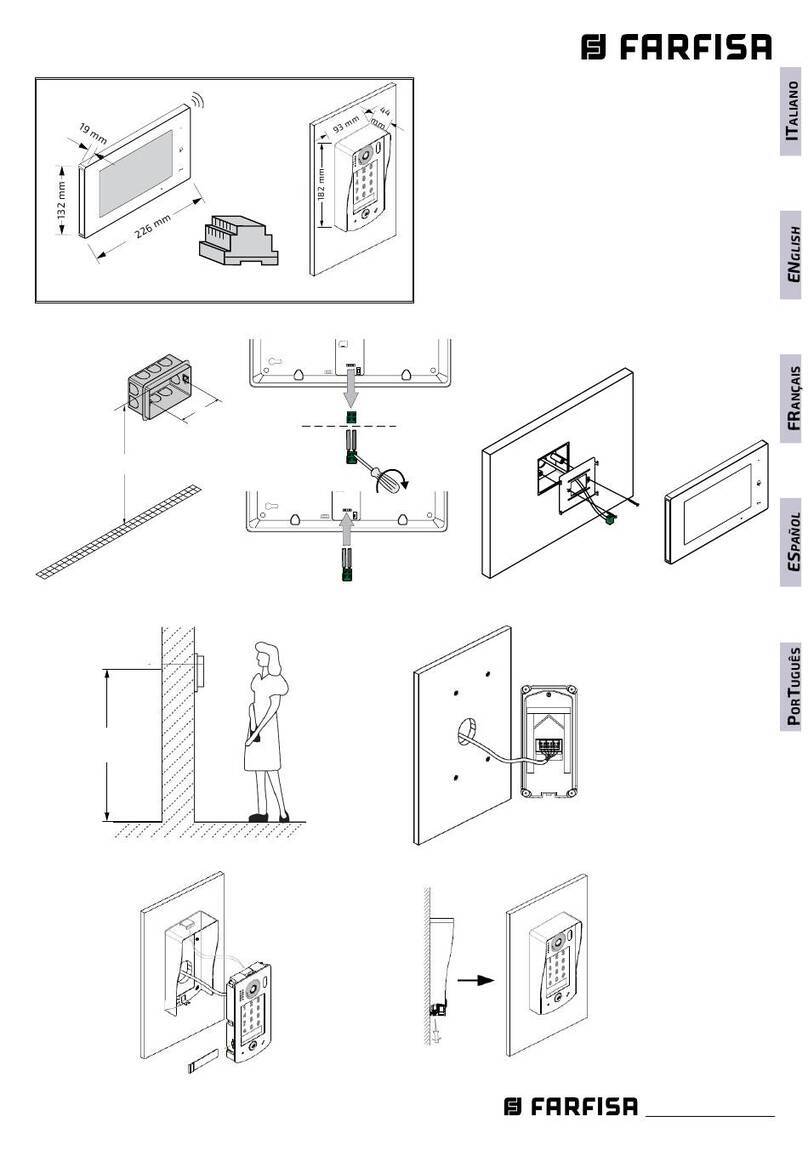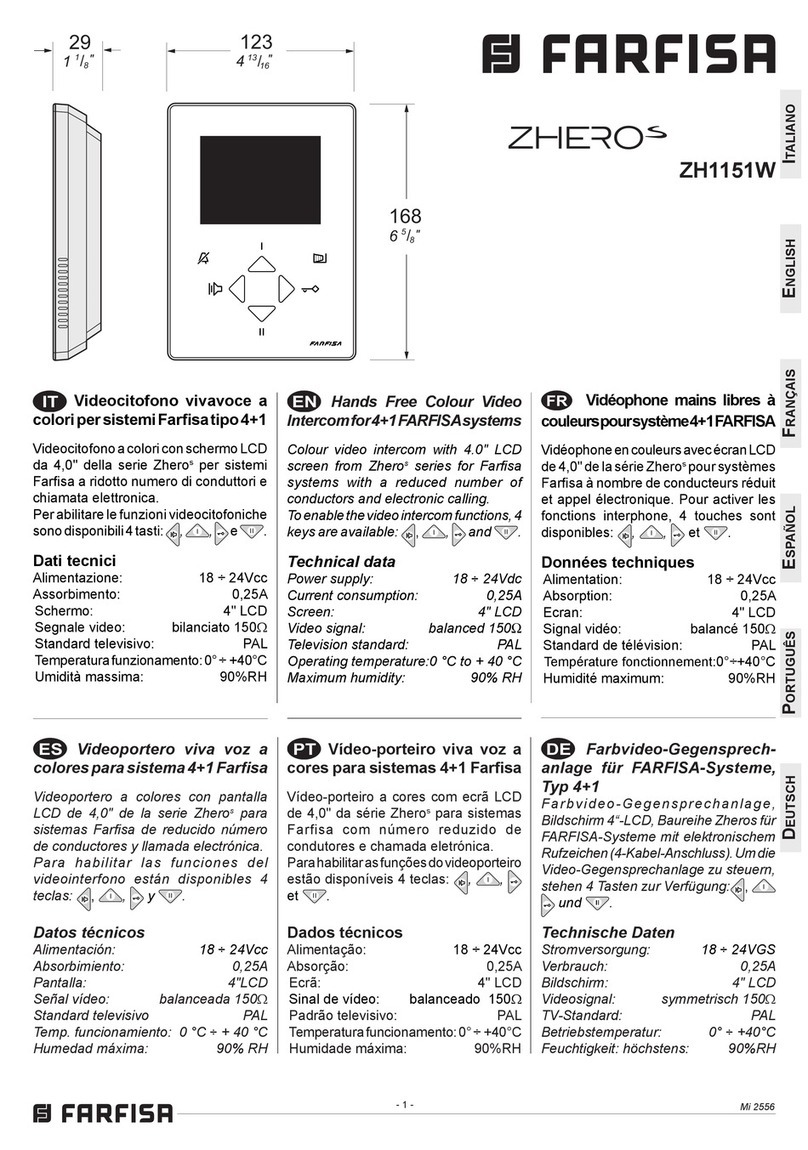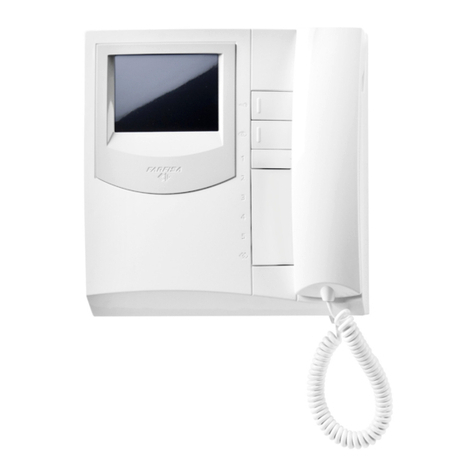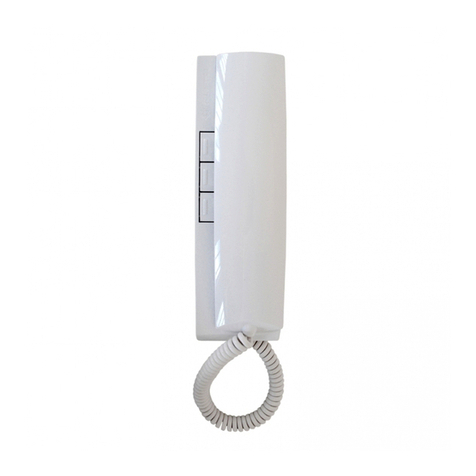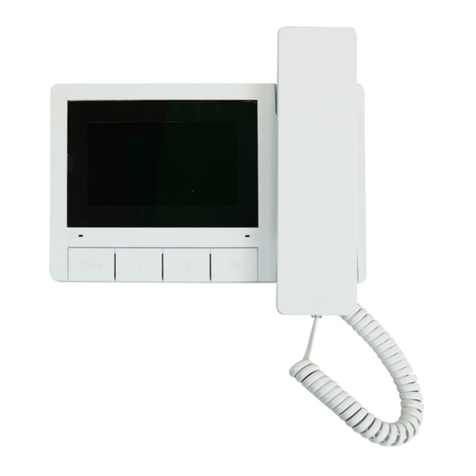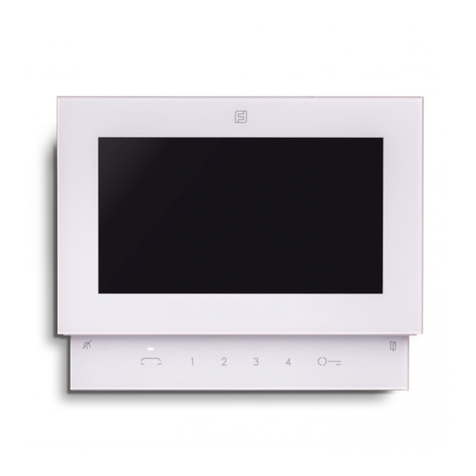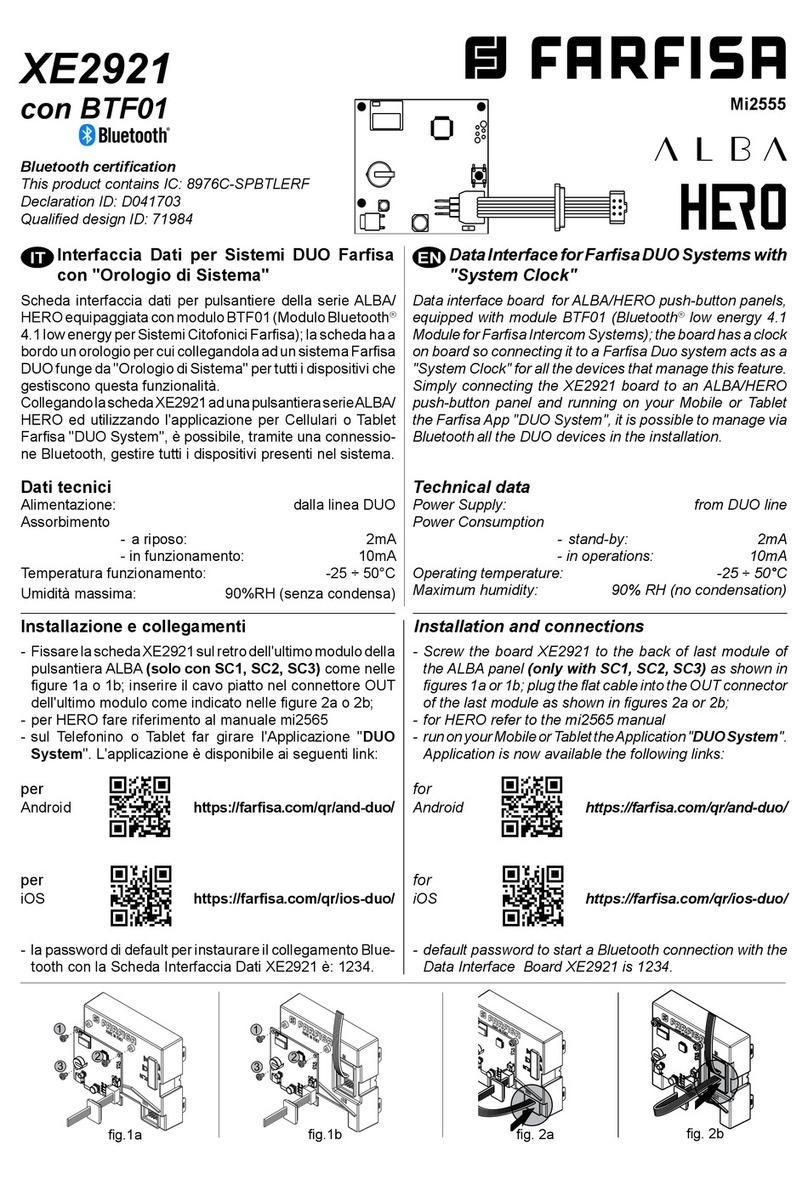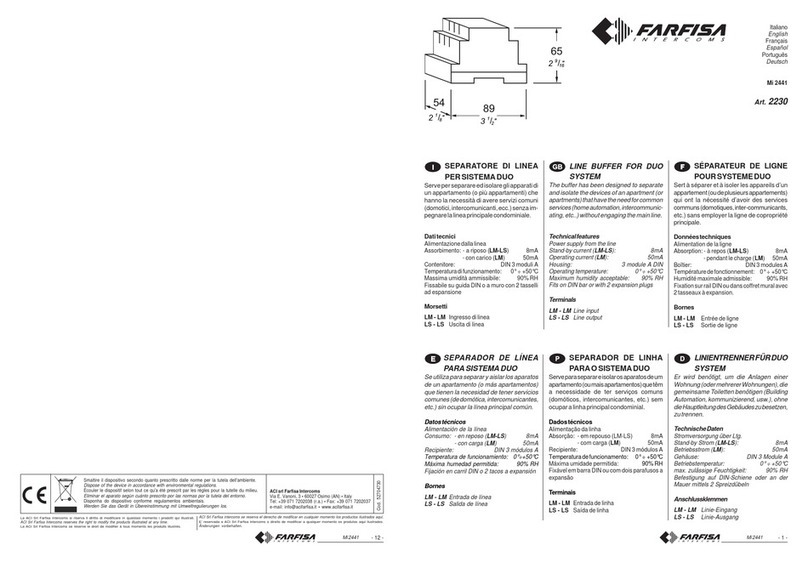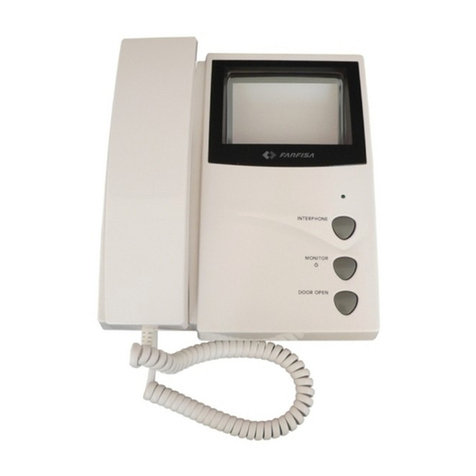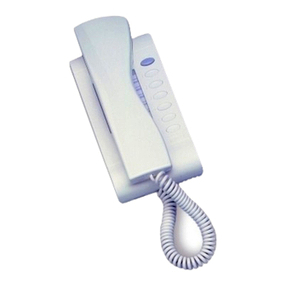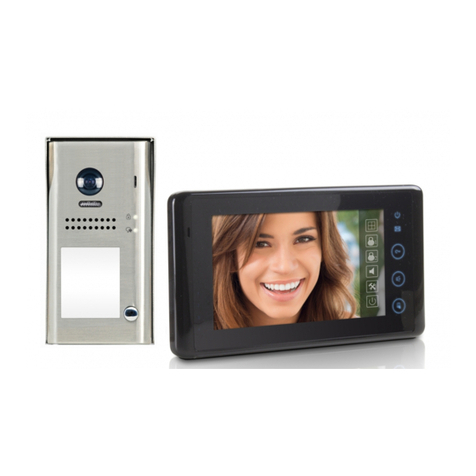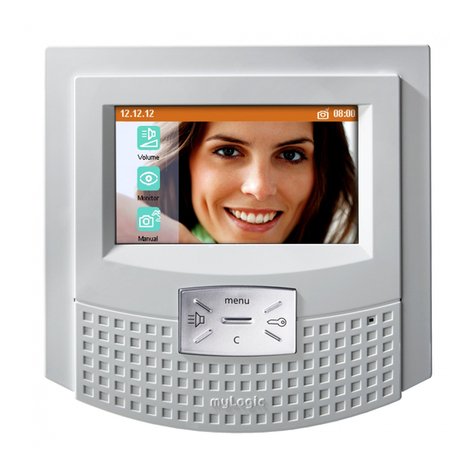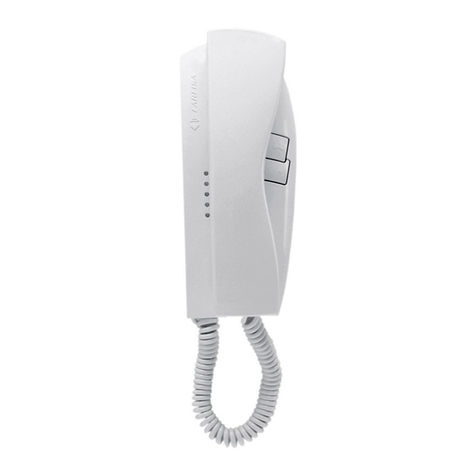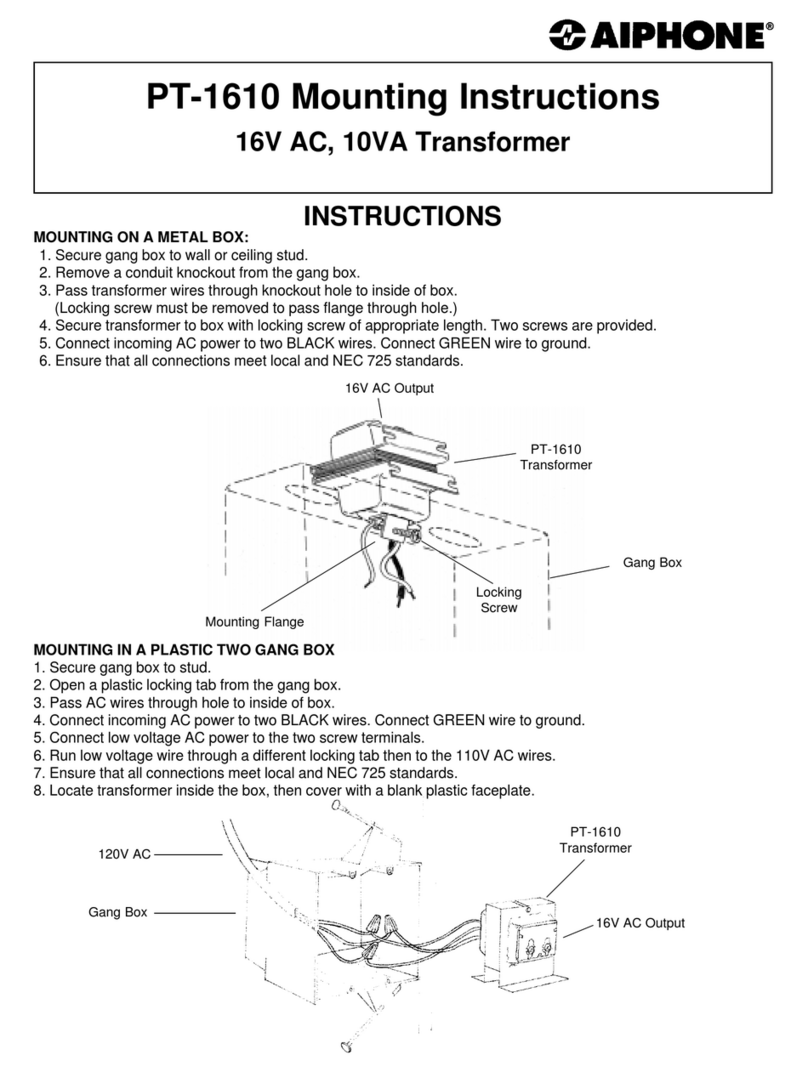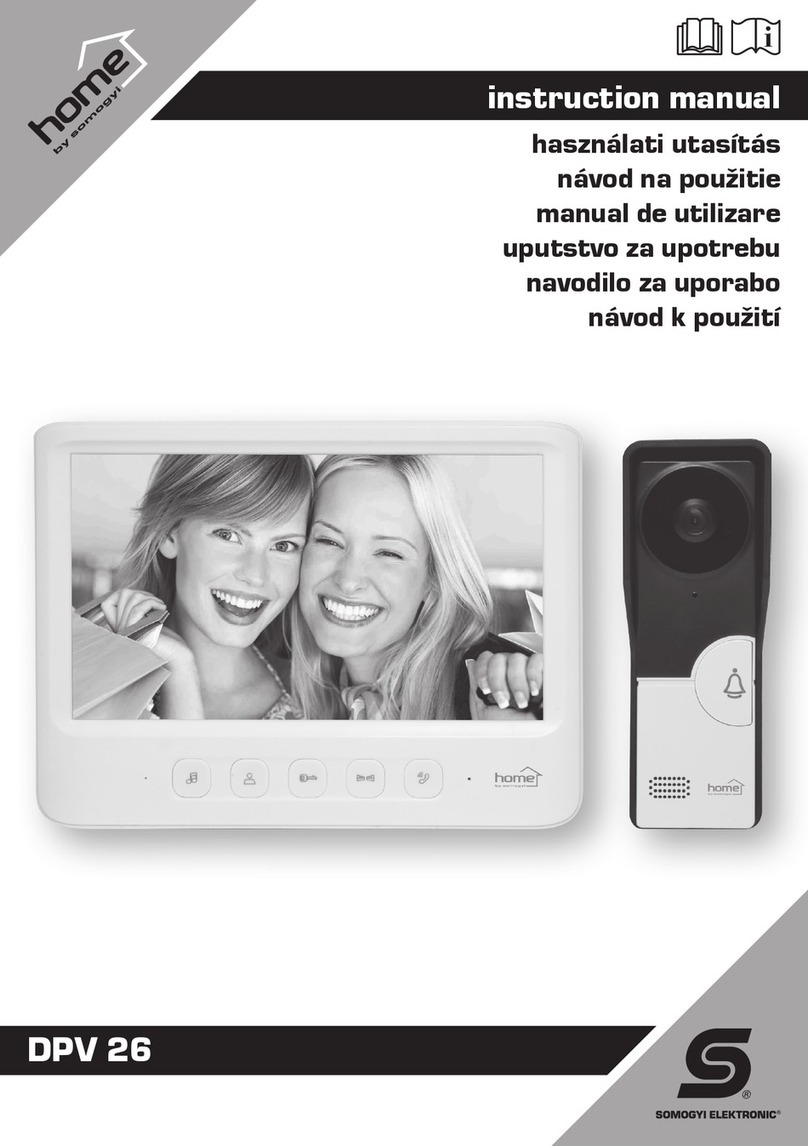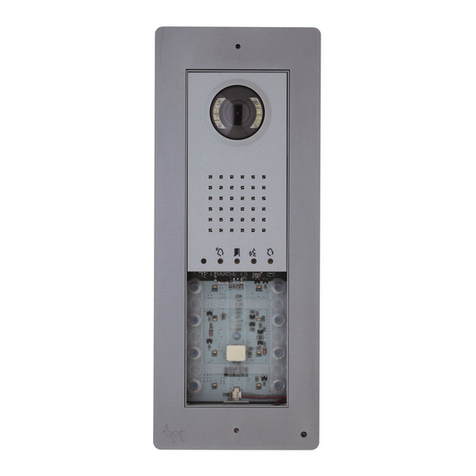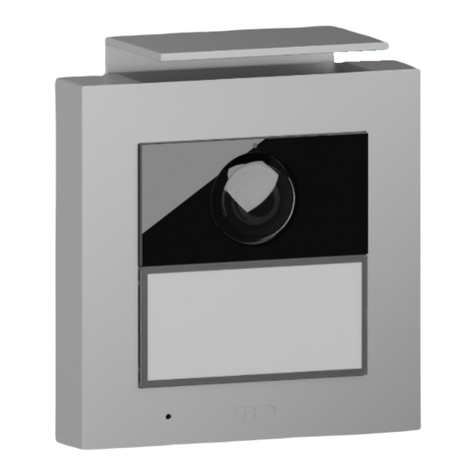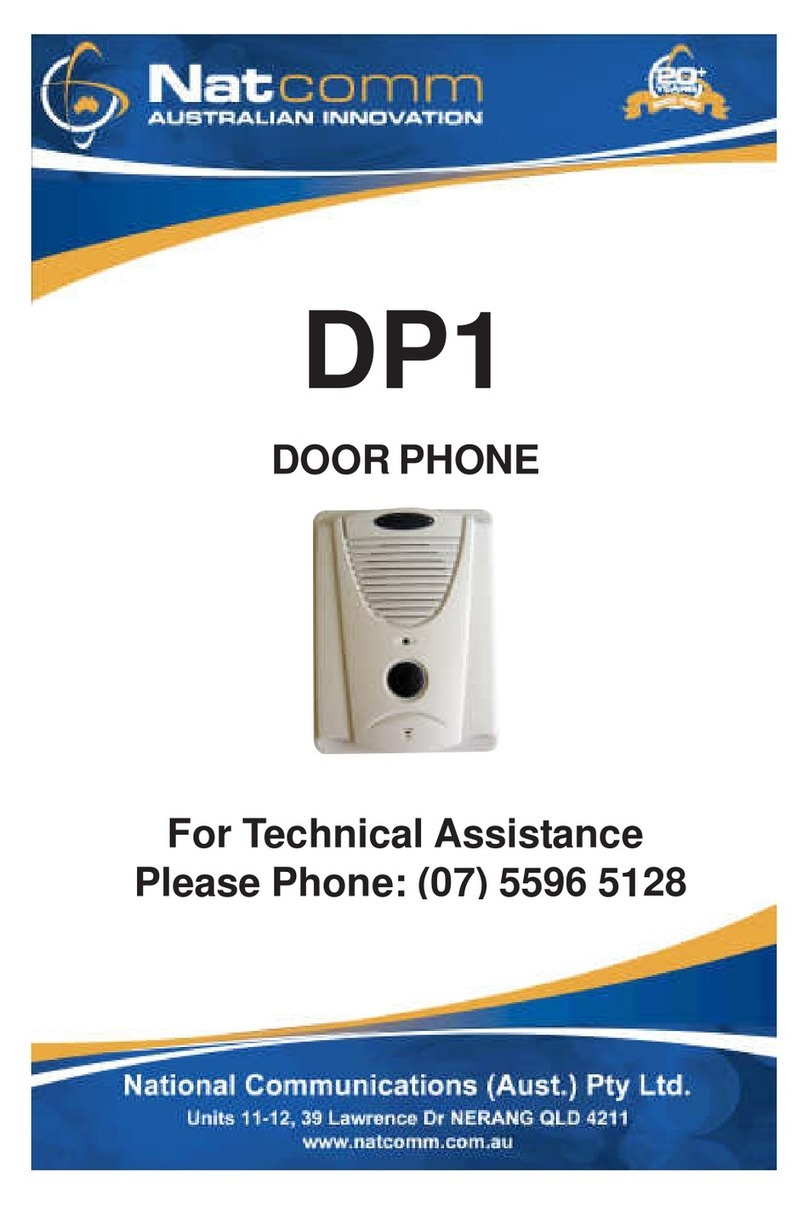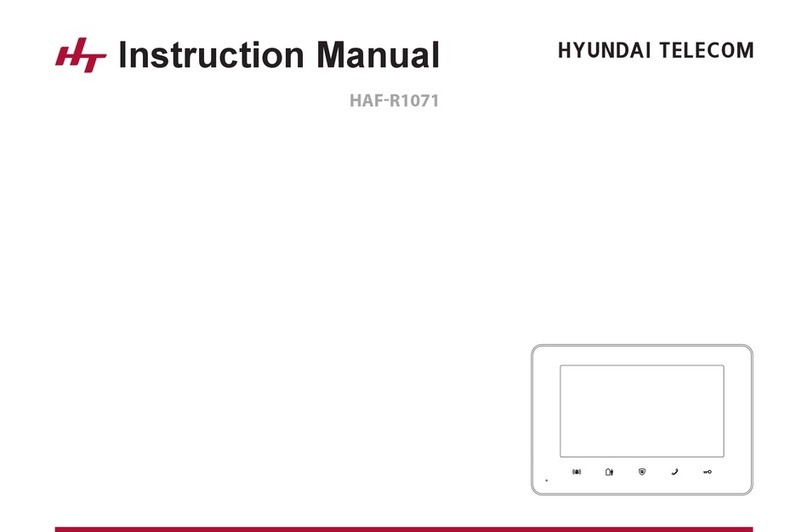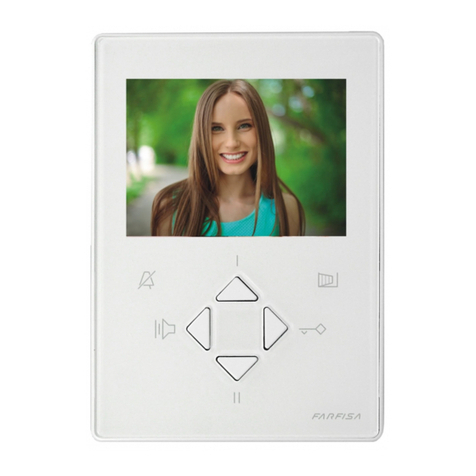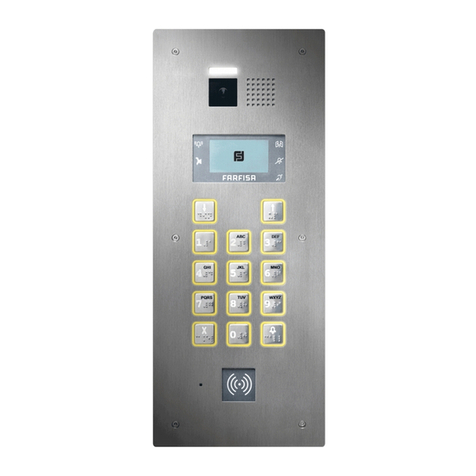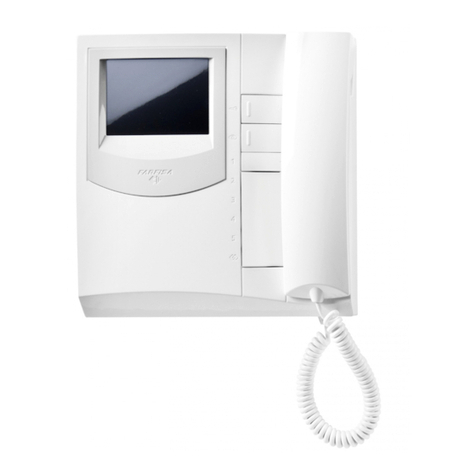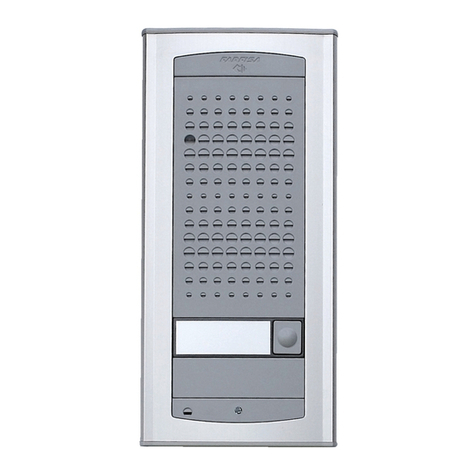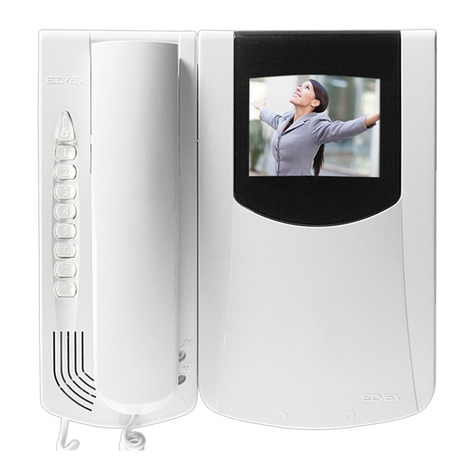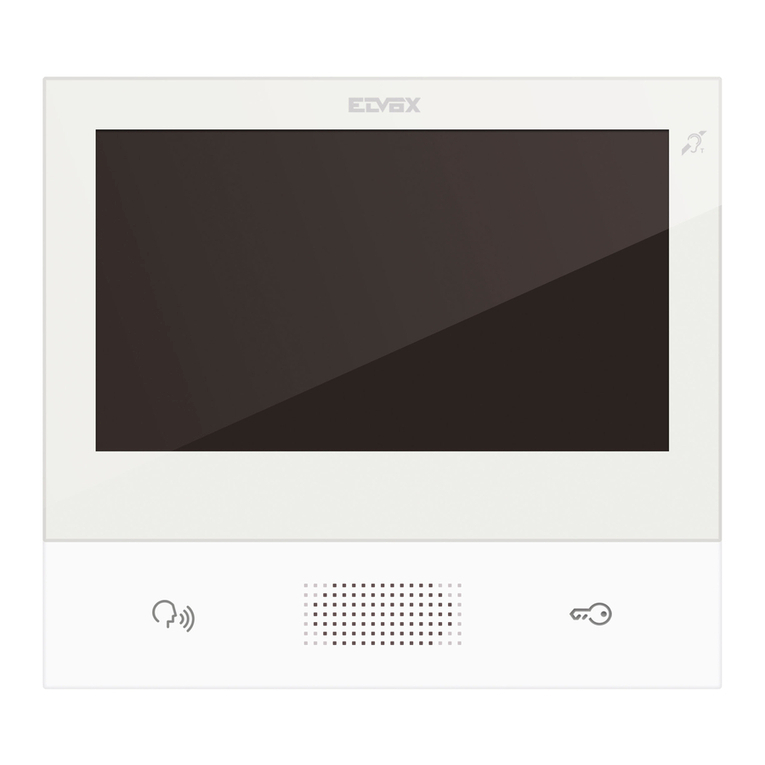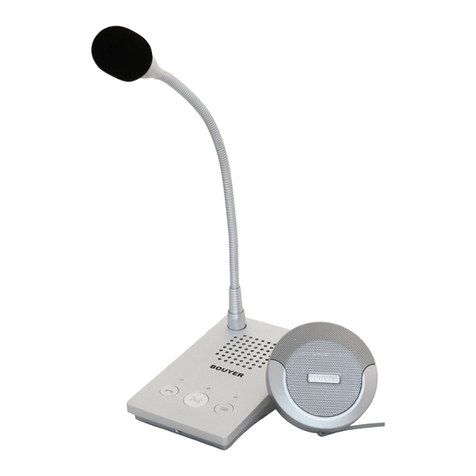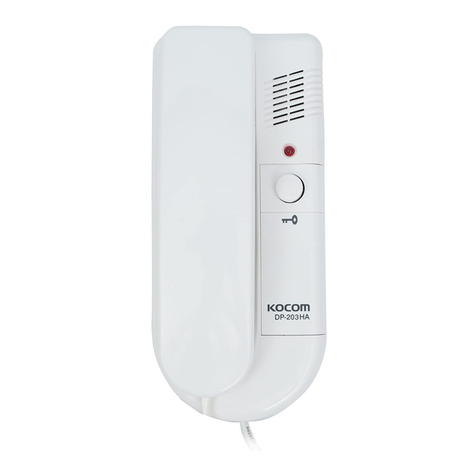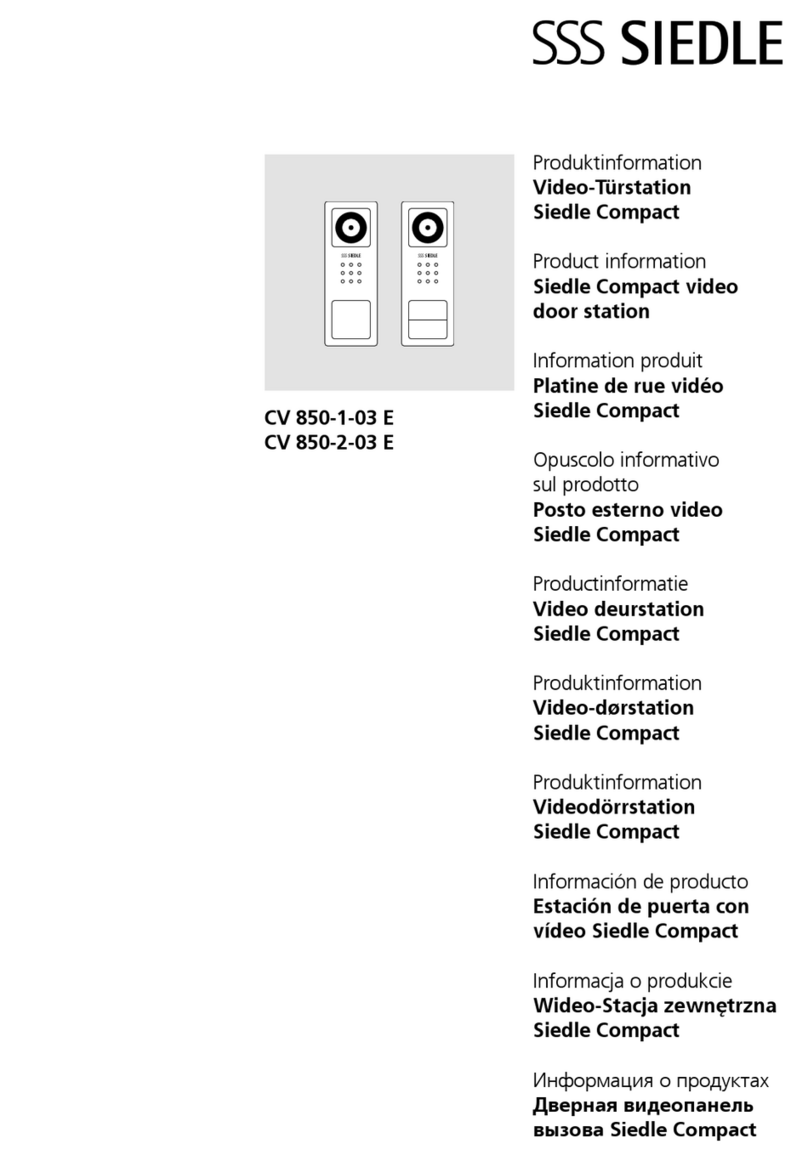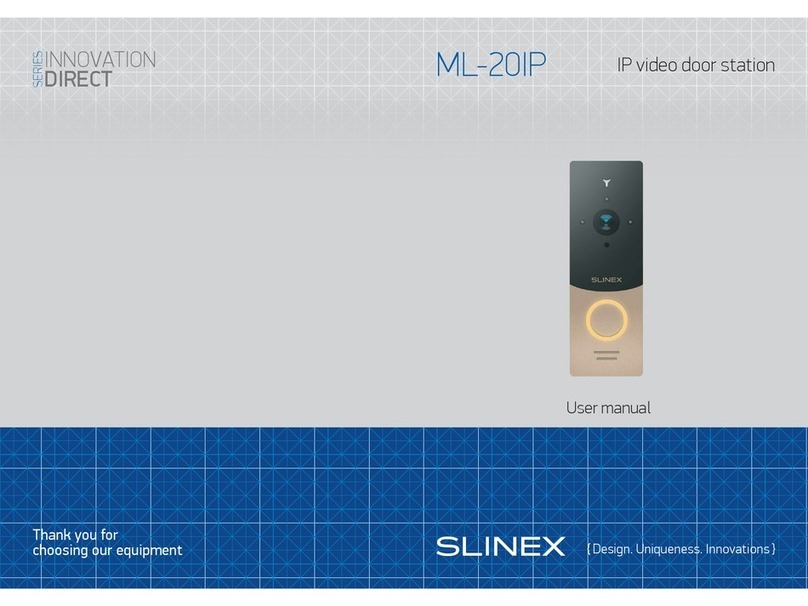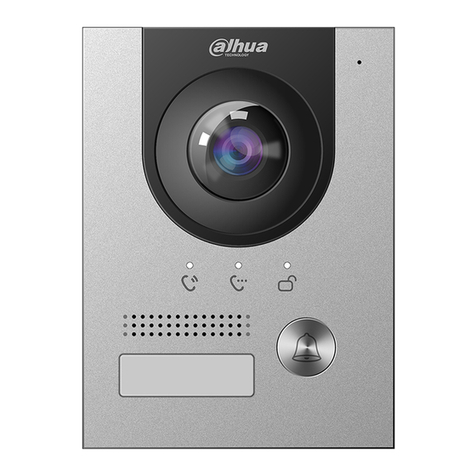
- 25 -
ITALIANOENGLISHFRANÇAISESPAÑOLPORTUGUÊSDEUTSCH
Mi 2530
continuewiththenextprogrammingorexit
programming.
Auxiliary relay address (codes 148-149)
On the J13 connector there is a common con-
tact (C) and normally open contact (NO) of the
internalauxiliaryrelay;byfactorysetting,the
auxiliaryrelayisnotaccessible(address255),
so the audio-video module must be suitably
programmed to use it.An actuator address (211
to 230) or a user address (000 to 200) can be
assignedtotheauxiliaryrelay,dependingon
theaddresssaved,theauxiliaryrelaybehaves
dierently:
- Actuator address. By saving the address of
an actuator, therefore a block address from
000to099anddeviceaddressfrom211to
230,theauxiliaryrelayactsasanactuatorand,
when called, it activates with the mode set in
the programming "Auxiliary relay activation
time" (code 132).
- User address. By saving an address of a
user, therefore a block address from 000 to
099anduseraddressfrom000to200,the
auxiliaryrelayonlyactivateswhenthelock
opening command arrives from a user having
an address equal to or greater than the one
saved; If you store the address 000-000, the
auxiliaryrelaywillactivateuponarrivalofthe
lock opening command of any user. The ac-
tivation mode is that set in the programming
"Auxiliary relay activation time" (code 132).
Auxiliary relay BlockAddress (code 148)
Entercode148;
press button1/ toconrm;
enter the BlockAddress that is to be assigned
to the relay (factory setting 255 which means
an unprogrammed Block Address; allowed
valuesfrom000to099);
press button1/ toconrm;
continuewiththenextprogrammingorexit
programming.
Auxiliary relay DeviceAddress (code 149)
Entercode149;
press button1/ toconrm;
enter the Device Address that is to be as-
signed to the relay (factory setting 255 which
means an unprogrammed Device Address;
admissible values from 000 to 200 or 211 to
230);
press button1/ toconrm;
continuewiththenextprogrammingorexit
programming.
Programming additional cameras as-
sociated with the external unit (codes
151-152-153-154-155-156-157-158) and
main video camera (code 159)
The CA2124AB and CV2124AB modules can
driveexternalvideomodulators(typeVM2521)
to which up to eight additional cameras can
be connected, for details see "External Video
Modulators (PDX1)" section. In the case of
additional cameras, the addresses of the vid-
eo modulators present in the installation and,
if necessary, the address of the main video
camera (TP) must be programmed.
Programming additional camera ad-
dresses VM1 ÷ VM8 (codes 151-152-153-
154-155-156-157-158)
Toprogramtheaddressoftherstadditional
camera VM1 enter code 151;
press button1/ toconrm;
entertheaddressoftherstadditionalcam-
era (the addresses of the additional cameras
must also be stored in the video modulators to
which the cameras are connected and must
beselectedfromthosereservedforexternal
units: from 231 to 253);
press button1/ toconrm;
if required, proceed in the same programming
the address of other additional cameras:
Code 152: entry address of VM2
Code 153: entry address of VM3
Code 154: entry address of VM4
Code 155: entry address of VM5
Code 156: entry address of VM6
Code 157: entry address of VM7
Code 158: entry address of VM8
otherwise continue with other programming
orexit.
Selecting main camera (code 159)
The main camera (TP) is the camera from which
the audio-video module starts the cyclic scan
of the associated cameras, for selecting the
camera you need to:
entercode159;
press button1/ toconrm;
enter the address of the main camera (the one
from which the cyclic displaysequence starts)
chosenbetween the VM1÷VM8addresses
programmed earlier. If the main camera must
be the one on the audio-video module(factory
setting), the address to be stored is 255;
press button1/ toconrm;
continuewiththenextprogrammingorexit
programming.
User programming NO Video (codes 180-
181-182-183-184-185-186-187)
Withthefollowingprogrammingyoucandene
two groups of users who must not receive the
videosignal(forexample,onlyintercomusers);
thetwogroupsareidentiedbythestartand
end group user address.
The1stGroupisidentiedbytheBlock(b) and
Device Address (d)oftherstuserbelonging
to the group:
U1(b)Start + U1(d)Start
and from the Block (b) and Device (d) address
of the last user in the group:
U1(b)Stop + U1(d)Stop.
The2ndGroupisidentiedinexactlythesame
way with the parameters:
U2(b)Start + U2(d)Start
and
U2(b)Stop + U2(d)Stop.
All users whose addresses are in one of two
groups, if called, will not receive the video sig-
nal. To delete any groups that are no longer
required, it is necessary to store both as Block
Address and Device Address of the Start group
user the value 255 (U1(b)start=U1(d)start=255
and/or U2(b)start=U2(d)start=255).
Programming U1(b) Start (code 180) and
U1(d) Start (Code 181)
EntertheBlockandDeviceAddressoftherst
userbelongingtotherstNOVideogroup.
Block Address U1(b)Start (code 180)
Entercode180;
press button1/ toconrm;
enter the BlockAddress that is to be assigned
totherstuserofthegroupNOVideo(factory
setting 255 which means an unprogrammed
block address; allowed values from 000 to
099);
press button1/ toconrm;
continue with the programming of the Device
Addressoftherstuserbelongingtotherst
NO Video group.
Device Address U1(d)start (code 181)
Entercode181;
press button1/ toconrm;
enter the DeviceAddress thatis to beassigned
totherstuserofthegroupNOVideo(factory
setting 255 which means an unprogrammed
block address; allowed values from 000 to
200);
press button1/ toconrm;
continue programming the address of the last
useraddressbelongingtotherstNOVideo
group (U1(b)Stop).
Programming U1(b)Stop (code 182)and
U1(d)Stop (code 183)
Enter the Block and Device Address of the last
userbelongingtotherstNOVideogroup.
Block Address U1(b)Stop (code 182)
Entercode182;
press button1/ toconrm;
enter the BlockAddress that is to be assigned
to the last user of the NO Video group (factory
setting 255 which means an unprogrammed
block address; allowed values from 000 to
099);
press button1/ toconrm;
continue with the programming of the Device
Addressofthelastuserbelongingtotherst
NO Video group.
Device Address U1(d)Stop (code 183)
Entercode183;
press button1/ toconrm;
enter the Device Address that is to be as-
signedtothelastuseroftherstNOVideo
group (factory setting 255 which means an
unprogrammed device address; allowed
values from 000 to 200);
press button1/ toconrm;
continuewiththenextprogrammingorexit
programming.
Programming U2(b)Start (code 184) and
U2(d)Start (code 185)
EntertheBlockandDeviceAddressoftherst
user belonging to the second NO Video group.
Block Address U2(b)Start (code 184)
Entercode184;
press button1/ toconrm;
enter the BlockAddress that is to be assigned
totherstuserofthesecondNOVideogroup
(factory setting 255 which means an unpro-
grammed block address; allowed values from
000to099);
press button1/ toconrm;
continue with the programming of the Device
Address of the rst user belonging to the
second NO Video group.
Device Address U2(d)Start (code 185)
Entercode185;
press button1/ toconrm;
enter the Device Address that is to be as-
signed to the rst user of the second NO
Videogroup (factory setting 255 which means
an unprogrammed device address; allowed
values from 000 to 200);
press button1/ toconrm;
continue with the programming of the address
of the last user belonging to the second NO
Video group.




















